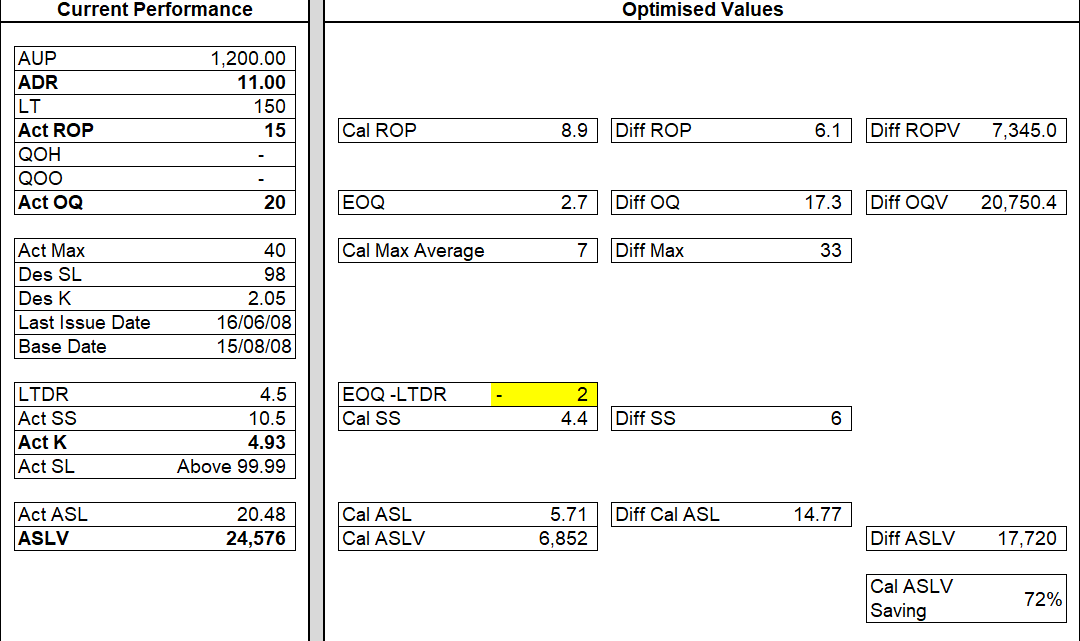MRO Consulting Optimisation
Optimisation supports ISO55000 by making decisions based on risk. A Stock-out risk must be set for each spare part based on the item’s criticality. Opportunities for reducing inventory are identified by determining the optimum ROP and EOQ, and then the most appropriate replenishment strategy.
Optimum ROPs & EOQs are determined by:
- Assigning a service level to each spare part based on its criticality
- Identifying the true lead time (company plus supplier)
- Determining the average demand rate
- Determining HC, BC
- ROP a fixed ROP and OQ
- Min-Max, a variable OQ to bring the stock level to a maximum (or the modified MMX of Min-ROP-Max)
- Constant Vendor Delivery, based on JIT concepts
Costs savings are identified by looking for potential cost savings. Prioritisation is based on differential financial value between the current average stock level and optimum average stock level.
The case study below is an example, where the optimum values are not appropriate, the options are then to a) increase one or more control parameters, so that they are not the optimum values or b) move to a different replenishment strategy. In this example a) was the selected option. The proposed values will not provide any great risk of a stock-out and will still deliver a 49% saving or $12,000

